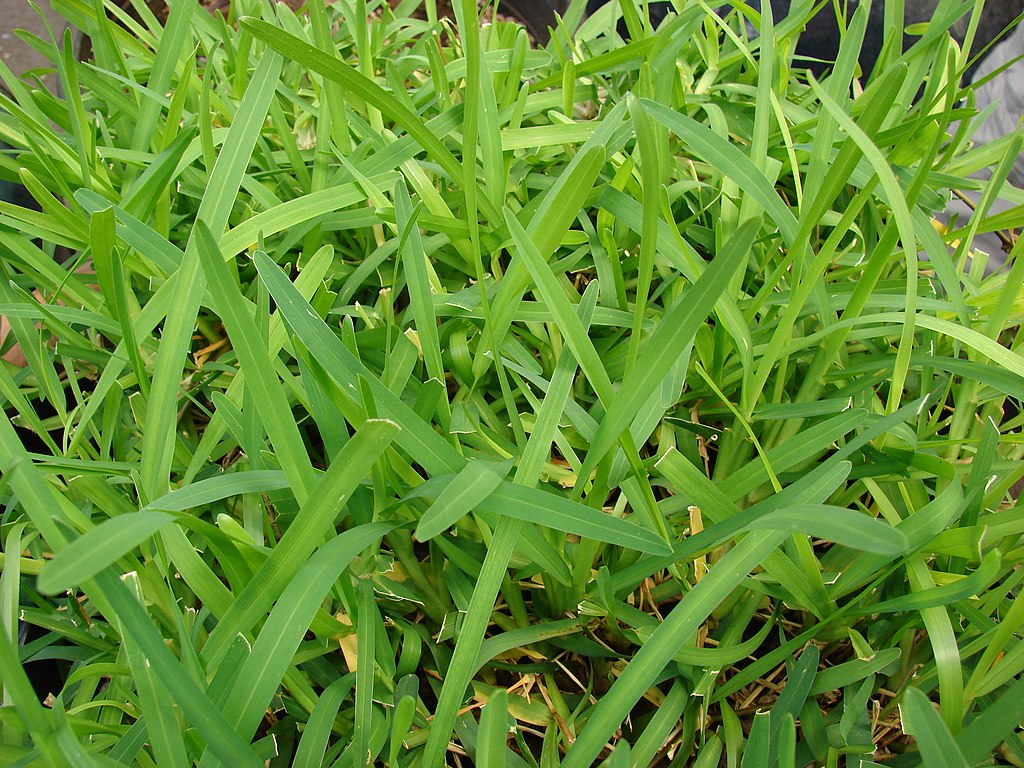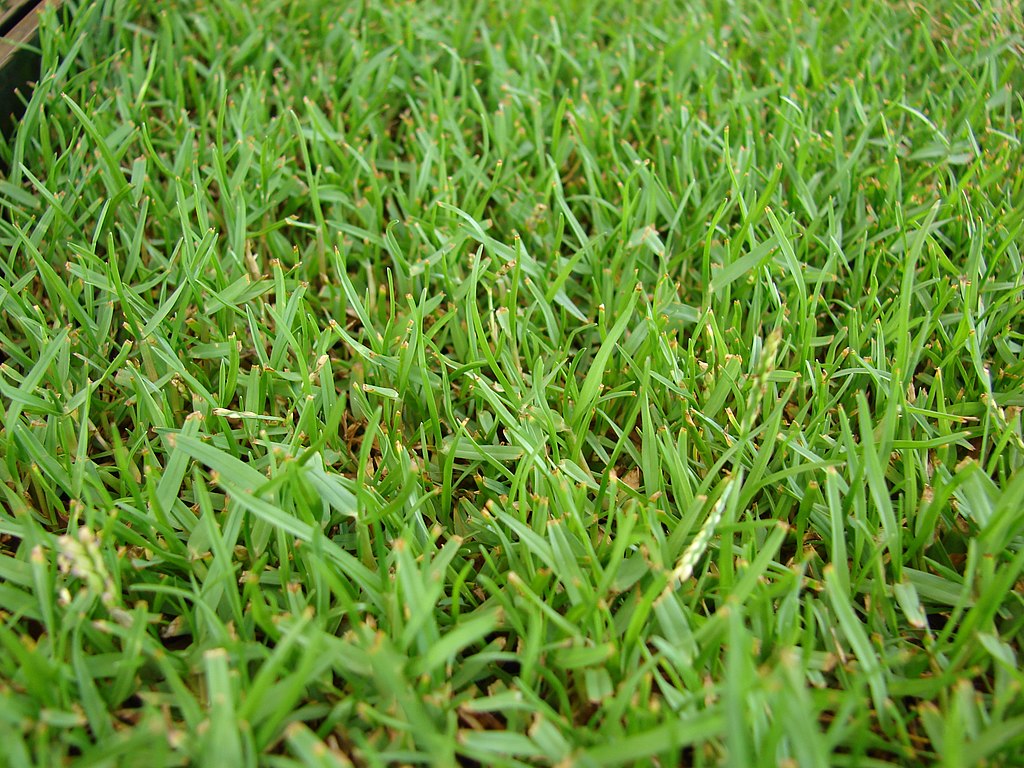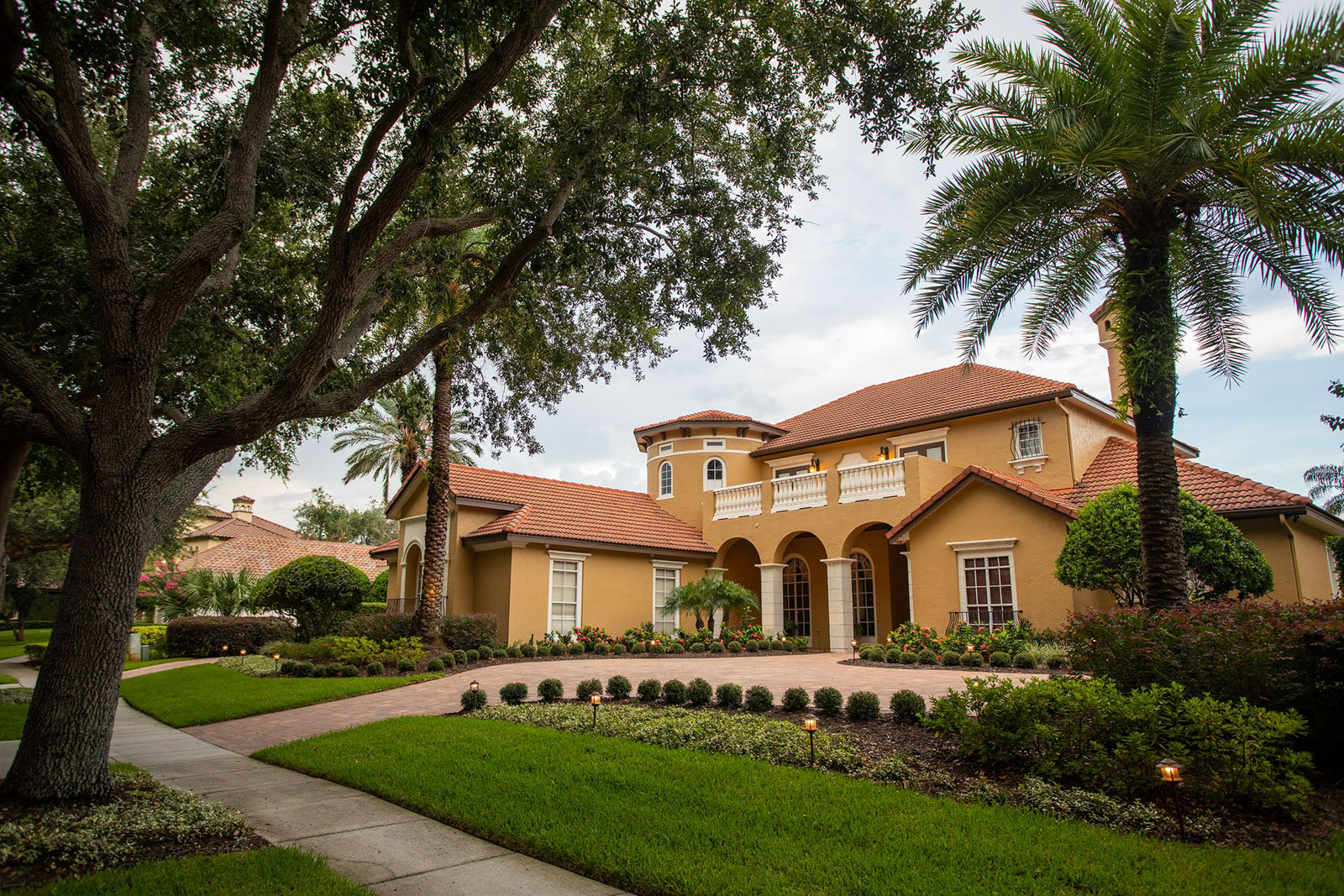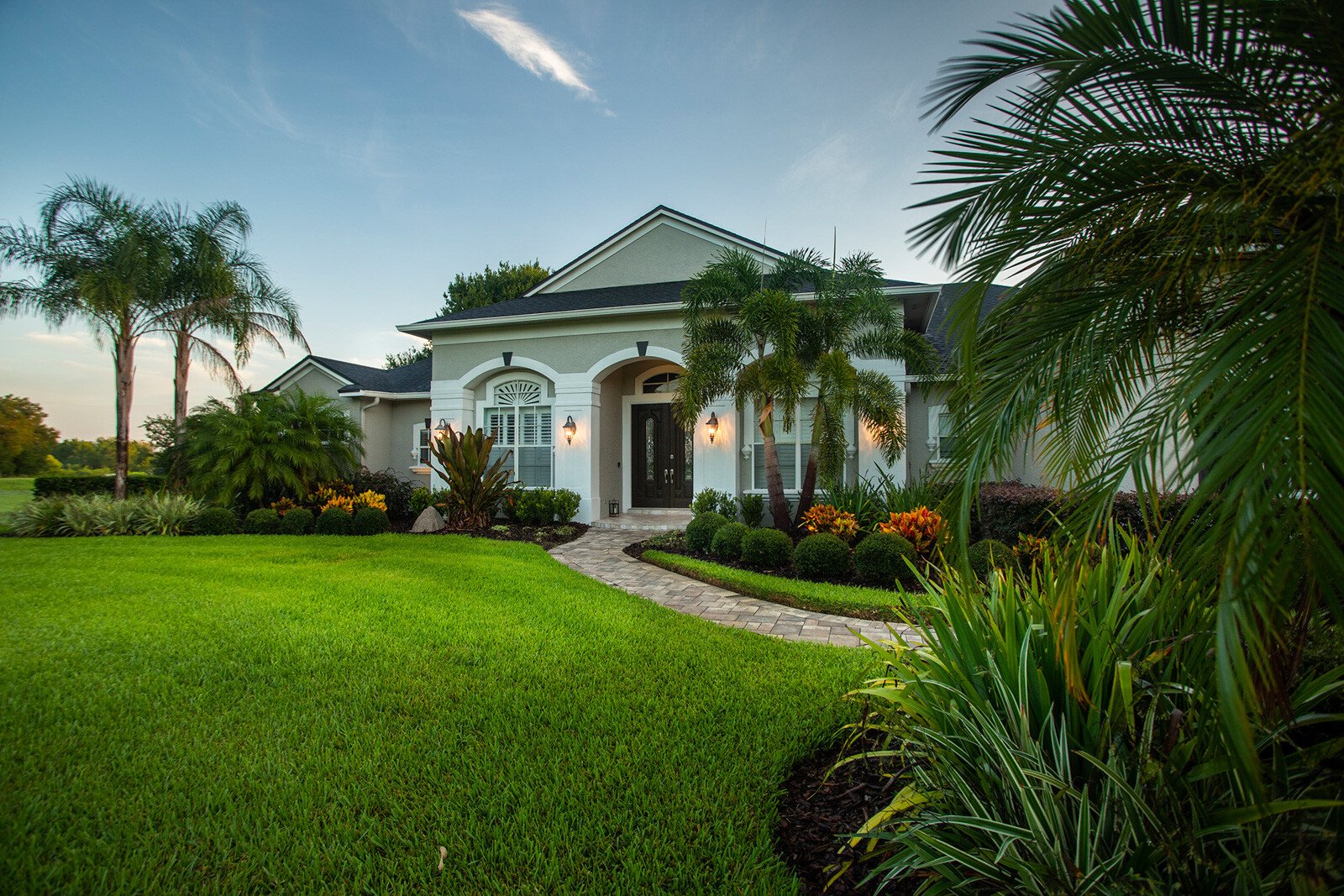Here in Central Florida, we’re known for sun. (All the more reason we appreciate shade.)
But when the lawn is in shade, it has to be suited for it. Most types of grass love the sun.
What’s the best grass for Florida shade?
There are a few options, including Seville St. Augustine, Classic St. Augustine, and Zoysia Palisades
Read more to learn about shade-tolerant grasses, along with other tips for growing grass in shaded areas.
First, How Much Sun Does Grass Need?
Even the best grass for Florida shade needs some sunlight to survive.
Most shade-tolerant grasses should receive a minimum of four hours of sunlight per day to survive and thrive.
The Best Grass for Shaded Areas
St. Augustine
Certain cultivars of St. Augustine Grass are the most shade-tolerant species of the warm-season grasses.

Most St. Augustine varieties actually grow best if up to 30 percent of full sunlight is filtered throughout the day, according to the University of Florida Extension.
Two St. Augustine varieties, in particular, are the best grass for shade in Florida.
Here’s a look at both grass types.
Seville St. Augustine
Seville is blue-green in color, considered a dwarf St Augustine Grass which is popular with many Florida homeowners.
It’s been around since 1980, so it has a proven track record.
Seville is a shade-tolerant grass. It needs a minimum of just two hours of sunlight per day, making it a perfect grass for shaded areas where other grass struggles.
If you have less than two hours of sunlight a day, then grass isn’t your best option.
Better to opt for a shade-loving ground cover, like Asiatic Jasmine, Ivey, Mondo Grass, Liriope, etc.
We have found from experience and over time that Seville tends to develop thatch after several years when installed in direct sunlight, therefore we generally try to only utilize Seville for shaded or partially shaded areas.
Classic St. Augustine Grass
If your property is a mix of sun and shade — and many are —St. Augustine Classic is a great choice.
It boasts wide blades and a beautiful, rich green color.
It also has better disease and insect resistance than other St. Augustine varieties.
Another Shade-tolerant Grass for Florida: Zoysia Palisades
Zoysia Palisades is a medium to coarse-textured grass noted for its shade tolerance and low water needs. It’s another good choice when considering grass for shaded areas.

A Few Tips When Growing Grass in Shade
Shade has its advantages.
Grass growing in partial shade has less stress from heat and drought. It’s often a darker green than grass growing in full sun.

Once you have the best grass for Florida shade, here’s how to keep it healthy:
- Shade means trees, and that means leaf accumulation. Bag your accumulated leaves. If you mulch them and leave them, they’ll encourage disease on shade-tolerant lawns as well as throw off the pH in your soil over time.
- Root competition. While your grass roots are hungry for nutrients, soil space, oxygen, and water, tree roots are also right in there competing for all of those things. If you have a number of trees on your property, expect to use more fertilizer and maybe more water.
- If you suddenly lose a longtime shade tree, and your once-shaded lawn is now baking in the hot sun, it could go into shock and die. Plan to replace it with a more sun-loving variety, like Floratam St. Augustine.
- During the rainy season, grass for shaded areas is more prone to fungus. Consider bagging your grass clippings to help prevent disease. ALWAYS avoid installing turf within shaded areas during the summer months, when possible.
- Mow your shaded grass at the highest recommended height for the species. The taller the grass, the more leaf area, which means the grass can absorb more sunlight. Higher mowing height also promotes deeper roots. That means healthier grass.
- Shaded grass grows more slowly, which means it needs less fertilizer. Use a slow-release nitrogen fertilizer to minimize growth, and look for a fertilizer that has equal or close to equal amounts of nitrogen to potassium.
- Grass for shaded areas typically needs less water than grass growing in full sun. Watering shaded grass on the same schedule as grass in full sun can encourage disease.
Add More Sunlight if Possible
Even the best grass for shade in Florida needs some sunlight. Worried your lawn gets too much shade?
Give it a sunlight boost by pruning tree limbs and thinning the canopy of trees that shade it.
Then more sunlight can filter through to the grass below.
The Best Grass for Florida Shade? Leave it to Ground Source
Not sure what the best grass for Florida shade is for your property?

Let us help you figure it out. Please keep in mind during your appointment that it is our first time at your property, the sun may be hidden on a cloudy day, the sun may be hiding behind a tree, it could be raining, etc. Providing us with insight as to how the yard receives sunlight throughout the day will help us provide you with the best type of grass for your lawn.
We’re sod experts, but our skills don’t stop there. We’re with you every step of the way as you plan your perfect outdoor space.
Sod, irrigation, landscape design: Let us transform your yard from an embarrassing eyesore to a place you spend every spare minute.
Are you ready to enjoy the vibrant, impressive yard you've always wanted? Request a quote today! We’ll help you review your options and then transform your property.
Image Sources: st. augustine grass, zoysia grass,


